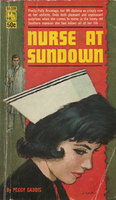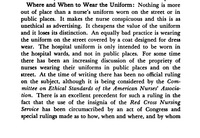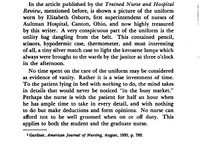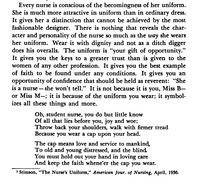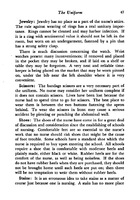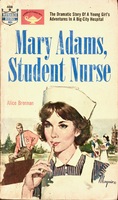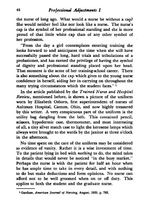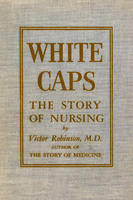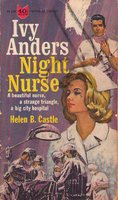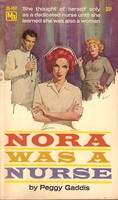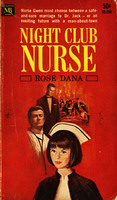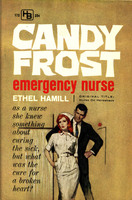The Significance of the Uniform
Nursing textbooks stressed the importance of the uniform. Students were taught the history of the uniform, urged to view it as sacred, and textbooks even provided guidelines for caring for it. In the late 19th and early 20th century, nursing schools each had distinct uniform variations; a nurse proudly wore the uniform that communicated her school association. Elements of the uniform also communicated hierarchies: student nurses often wore gray or striped dresses while graduate nurses wore white.
Nurse romance novels, too, stress the uniform's significance and use it as a rhetorical device. The protagonist expresses pride at earning her R.N. pin or stripe on her cap and other characters admire her in her uniform. The uniform goes on to make appearances throughout the narrative, used to signify how sincerely and professionally a character fills her role as a nurse. The author foreshadows antagonistic characters by having them disrespect the uniform or neglect to maintain its sharp appearance. The antagonist nurse betrays her nurse identity by also cutting corners, endangering patients, gossiping, and acting on her envy of the protagonist. In the novels, unlike the cover illustrations, protagonists never wear their uniform outside their clinical setting. This, of course, is according to strict rules outlined in nursing textbooks.
Be sure to click each image to open up a lightbox gallery with more examples, images, and quotes!
The Nurse's Cap
Capping ceremonies were eagerly anticipated. They celebrated a woman joining the collective identity of the nursing sisterhood. As scholar Keaghan Turner has argued, “When they put on the uniform, they are transformed, literally becoming part of a collective identity of working young womanhood, signified by the conformity of their daily routine and externalized in their standard-issue attire.” Nursing students received an RN pin and a black stripe for their cap upon graduating. These insignia conferred status and authority to the nurse and distinguished her from those who were still students.
Purity, Authority, and Eroticism
Many scholars have noted that the nurse's veil or cap evokes the monastic origins of nursing and that the color white encourages people to associate the nurse with purity, cleanliness, and even chastity. Through World War I nurses were trained to remain emotionally distant from patients and they were taught to view their uniform as a means of communicating both their romantic unavailability and professional authority. That is, the uniform was meant to desexualize the nurse in the eyes of male patients, especially soldiers. Nurse fiction during World War I, described the dangers of letting patients see the nurse in "civvy clothes."
Perhaps it is precisely because the uniform had religious and authoritative associations that it became fetishized—what, after all, is more enticing than a taboo?
While female characters in nurse romance novels wax poetic about the pride they feel in having earned the right to wear their uniform, male characters in romance novels make no qualms about expressing how the uniform makes a nurse more attractive. One thing that male and female characters agree on? Just how silly that cap is...
Prompts for Critical Thinking
-
What is the purpose of a professional uniform?
-
How did regulations on nursing uniforms function for identity formation? What role did it play in professional socialization?
-
What does a nurse's uniform communicate to patients or the public?
-
How have nursing uniforms changed over time? What is lost/gained by nurses wearing scrubs instead of the cap and white uniform?

